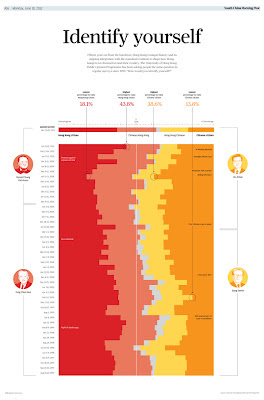The chart shows every goal, plotted by date scored. The length of a bar represents the number of goals scored in that day’s match.
 |
We wanted to do more than simply compare the number of goals each player has scored. Presenting every goal on a timeline in this way allows us to study the data and draw our own conclusions as to which of the two goalscorer's records in most impressive. It lets us see busy scoring periods, drier seasons, big hauls in some games (often scoring 4 or 5 goals) and most importantly, how Muller continued his prolific scoring rate for many years after he set the record in 1972.
The data for Messi's goals and when he scored them was pretty easy to find from various reliable websites. Muller's was not so easy. So much so we had to commission a private sports data company in Germany to compile it for us. In the end we decided it was worth the extra expense in order to show the information this way and give the reader a different angle to other Messi infographics they may have seen recently.














































